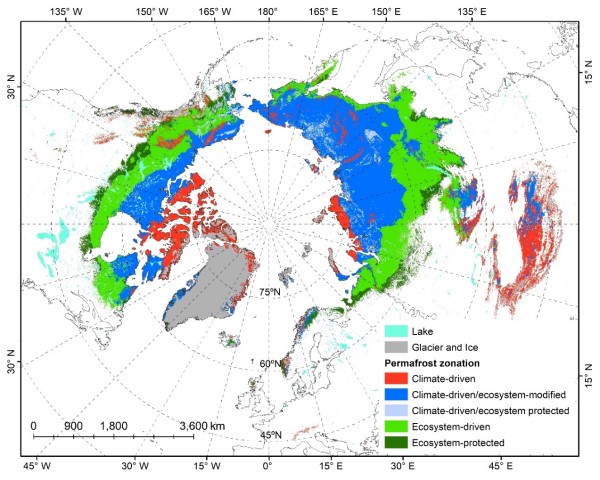Researchers Release Biophysical Permafrost Zonation Map in the Northern Hemisphere
Updatetime:2021-11-05From:
【Enlarge】【Reduce】
Chinese researchers from the Northwest Institute of Eco-Environment of the Chinese Academy of Sciences (CAS) developed a rule-based decision framework to delineate the biophysical permafrost zones in the Northern Hemisphere at 1-km resolution that incorporate the interactions among biophysical factors on permafrost stability.
They produced a new permafrost zonation map using the rule-based GIS model, integrating the high accuracy permafrost extent, climate conditions, vegetation structure, soil conditions, and topographic conditions, as well as a specific map of extremely ice-rich Pleistocene permafrost (yedoma).
This map is potentially useful for predicting permafrost degradation and ecological transitions, and for assessing the future risks to infrastructure and society from climate warming, as well as for planning the mitigative strategies and measures of engineering infrastructure in cold regions.
This study showed that the permafrost regions in the Northern Hemisphere (totaling 19.76*106 km2 excluding glaciers and lakes) was classified into five types, climate-driven (19%), climate-driven/ecosystem-modified (41%), climate-driven/ecosystem protected (3%), ecosystem-driven (29%), and ecosystem-protected (8%) .
Overall, 81% of the permafrost regions in the Northern Hemisphere are affected by ecosystems, indicating the dominant role that ecological processes have in controlling permafrost stability.
The finding highlights the importance of reducing ecosystem disturbances (natural and human activity) to help slow permafrost degradation and lower the related risks from a warming climate.
This study has been published in the Environmental Research Letters. The biophysical permafrost zonation map is publicly available and can be downloaded via https://doi.org/10.11888/Geocry.tpdc.271659.

Biophysical permafrost zones in the Northern Hemisphere based on climate and ecosystem drivers. (Image by RAN Youhua)
Contact:
RAN Youhua
E-mail: ranyh@lzb.ac.cn
Northwest Institute of Eco-Environment and Resources, Chinese Academy of Sciences, Lanzhou, China.
Appendix




